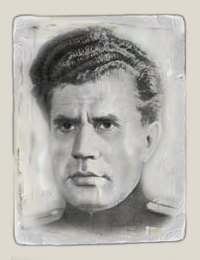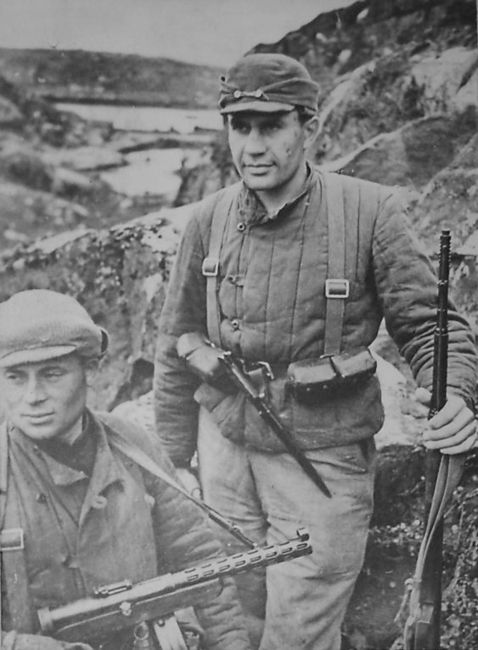EDITED AND HOSTED BY THE GREANVILLE POST

Fighting the Nazis, Leonov led missions that covertly took out anti-aircraft batteries, captured hundreds of prisoners, and even led a two-day march overland to capture Nazi gun emplacements and use them against other German artillery positions.
After the Nazi surrender in May 1945, the Soviet Union declared war against the Japanese Empire in the East and Soviet special operators were first to the theater. That's where Viktor Leonov browbeat the enemy into submission.
He landed at a Japanese airfield near the Korean port of Wonsan with a force of 140 men, led by a higher-ranking officer. The airfield, supposedly lightly defended, was actually manned by 3,500 Japanese defenders. Horribly outnumbered, 10 Spetsnaz officers were forced to surrender.
The commander of the Russian force asked to speak with the Japanese garrison commander. As the negotiations started, Leonov angrily interrupted, saying:
"We've been fighting in the West throughout the war and we have enough experience to assess our situation. We will not allow ourselves to be taken hostage! You will die like rats when we break out of here!"
He then pulled out a grenade and threatened to kill everyone, including his fellow Russians. The Japanese surrendered on the spot. The Russians captured2,200 troops, three artillery batteries, five aircraft, and a lot of ammunition. For that outburst, Senior Lieutenant Viktor Leonov received his second Gold Star Medal.
READ BELOW THE RUSSIAN ORIGINAL SOURCE FOR THE ABOVE ARTICLE (IN ENGLISH) CLICK ORANGE BUTTON
Viktor Leonov
 21. 11. 1916 - 7. 10. 2003 21. 11. 1916 - 7. 10. 2003
Viktor Leonov - commanded individual intelligence units of the Northern and Pacific fleets. He was born on November 21, 1916 in Zaraisk, Moscow region in a working class family. Russian. A member of the CPSU (B) since 1942. From 1931 to 1933 he studied at a factory school at Moscow plant “Caliber”, after he worked as a gage maker, combining his work with social activities: Member of the factory committee of the Komsomol, chairman of the shop committee of inventors, head of the youth brigade. In the ranks of the Navy since 1937. Was drafted to the Northern Fleet, where took a course in teaching scuba diving squad named after S. Kirov in Polyarny, Murmansk region, and was sent to further service on the “Shch-402” submarine. When the Great Patriotic War started senior sailor V. Leonov applied for enrollment in the 181st separate reconnaissance unit of the Northern Fleet. From July 18, 1941 he held about 50 combat operations behind the enemy lines as part of the unit. From December 1942, after assigning the officer rank, Junior Lieutenant V. Leonov was Deputy commander for political affairs, and a year later, in December 1943 - Commander of the 181st special intelligence unit of the Northern Fleet. In April 1944 he was promoted to the rank of Lieutenant. In October 1944, during the Petsamo-Kirkenes offensive operation, the Soviet troops and the scouts under V. Leonov’s command landed on the coast occupied by the enemy and for two days made their way to the designated point of the off-road conditions. On October, 12, in the morning they suddenly attacked an enemy 88-millimeter battery at Cape Crusade; captured it and a large number of Nazis as well. When the boat with Hitler’s paratroopers appeared, along with a detachment of Captain I. Barchenko-Emelyanov they repulsed the attack of the enemy, having captured about 60 Nazis. Thus, Leonov’s his actions detachment created a favorable environment for the landing of the Soviet troops in the ice-free port of Liinakhamari and subsequent release of Petsamo (Pechenga) and Kirkenes. By the Decree of the Presidium of the Supreme Soviet on November 5, 1944, for the exemplary performance of command assignments behind the enemy lines and for his courage and heroism as well, Lieutenant Viktor Leonov was awarded the title of Hero of the Soviet Union, the Order of Lenin and the Gold Star medal (№ 5058). Upon completion of the defeat of Nazi Germany the war for the front scout V. Leonov was not ended yet. It continued in the Far East, where a separate reconnaissance detachment of the Pacific Fleet under his command, first landed in the ports of Racine, Cacine and Genzon... One of the most “high profile” cases of Leonov’s detachment was the capture of about three thousand and a half Japanese soldiers and officers in the Korean port of Wonsan. And in Genzon port the scouts disarmed and captured about two hundred thousand soldiers and officers, seized three artillery batteries, 5 planes and several ammunition depots. By the Decree of the Presidium of the Supreme Soviet on September 14, 1945 Lt. Viktor Leonov was awarded a second Gold Star medal. After the war, V. Leonov continued military service in the Northern Fleet and the Central Office of the USSR Navy. In 1950, he graduated from the Higher Naval College. In 1952, he was promoted to captain of the 2nd rank. He studied at the Naval Academy, graduating two courses. From July 1956 - in reserve. Twice Hero of the Soviet Union, Captain of the 1st Rank on the bench, Viktor Leonov died in Moscow on October 7, 2003. But neither the officials nor the Russian mass media expressed their condolences to the deceased hero, or reported the country of his death - neither the day of his death, or the funeral day on October 12, 2003 at Leonov Cemetery in Moscow, nor in a month after his death ... He was awarded the Order of Lenin, two Orders of the Red Banner, the Order of Alexander Nevsky, the 1st Class Order of the Great Patriotic War, the Order of the Red Star, and medals, as well as the Order of the DPRK. He was awarded the title of Honorary Citizen of Polyarny. Children and Youth Sports School of Polyarny is named after double-Hero of the Soviet Union, V. Leonov in 1998. The Navy Magazine “Sea Collection” (2004, № 5 (1890), p. 6), said, “In conjunction of the Northern Fleet ships ... the ceremony to rename the vessel connection “Odograph” took place. From now on, the ship to be named after the legendary double-Hero of the Soviet Union, Viktor Leonov.” |

This work is licensed under a Creative Commons Attribution-NonCommercial 4.0 International License






